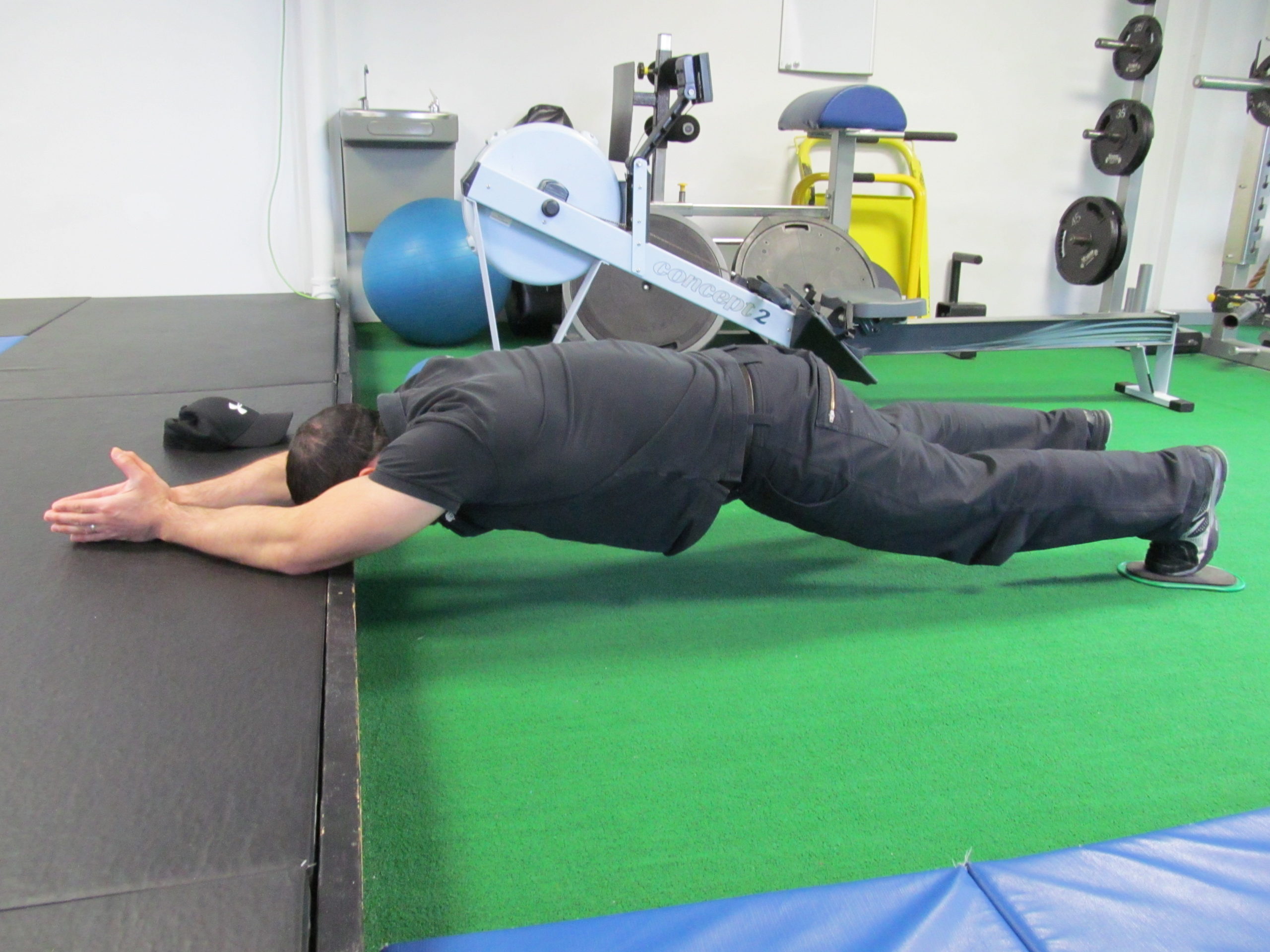On The Path to The Most Effective Core Workout
No topic stirs more nit-picking than training the core. The trend of late is to cast as evil and purge from contemplation any exercise that causes the slightest degree of flexion or rotation of the spine. This intolerance is justified, say the pundits, in the name of spine safety. Yet, in sport and life, mega-spine flexion, extension and rotation occur frequently. Is there room for middle ground? A philosophical compromise? From my persepective, moments of spine motion and moments of spine stability should be alternated – the ratio depending upon individual circumstances. People need to pause for thought before reacting with derision and closed-mindedness. Lower back injuries are largely avoided with proper technique, astute program design and an understanding of spine health. With that said, here are seven MANDATORY elements required to have The Most Effective Core Workout:
1) A definition of “core”
The term “core” drives me nuts. It lacks precise meaning and suggests a muscular order of importance. What muscle or group of muscles deserves the title of core? The abs and obliques? What about the glutes and spinal erectors? Or the psoas? No muscle is universally more important than another. Functionally, peripheral muscles like the finger flexors and calf muscles can easily trump core muscles in many situations. For example, six-pack abs will be of no use to you on moving day if you drop your side of the couch (due to a weak grip). From a resiliency perspective, an injury to the periphery is just as disabling as an injury to the core. Why isn’t neck stability just as vaunted as “core stability”? Core is not a word which belongs in the vernacular of serious fitness folk!
2) DATA
How can you have your best core workout if you haven’t any idea what constitutes beating your previous best? Hard work alone never guarantees success. Fitness must be measured! Hard numbers guide us towards the path of success. Abdominal exercises and workouts are notoriously devoid of essential numbers. The Most Effective Core Workout must feature numbers indicating load, speed, distance and time!
3) Highly Effective Exercises
Most popular core workouts use runty exercises featuring meaningless movements and a lot of cheap “feel the burn” isometics. Effective exercises have common traits. These traits include:
- The ability to generate incredible muscular tension at optimal muscle length
- Ease of measurement (you can accurately monitor load, range of motion, moment arms etc.)
- A lack of complex devices which corrupt muscle recruitment
- A high degree of relevence to the goals of the athlete (ie kicking power, punching power, naked power)
- Ease of learning. Tension on the target muscle is not lost due to instability and excessive skill.
Two examples of advanced, highly effective abdominal exercises:
Valslide Full Extension (Top Row) and Barbell Rollout (Bottom Row)
4) The Right Number of Sets and Reps
The most effective workouts match set and repetition schemes with the physiology of the musculature. The rectus abdominis, charged with moving major moment arms (the hips with extended legs or the torso with extended arms) is predominantly composed of muscle fibres capable of high force production. They respond best to low repetions, heavy loads and multiple sets. In general, advanced trainees seeking rapid abdominal devlopment should keep repetitions at six (or below) and sets per exercise at six (or above). Hit a muscle’s “adaptive niche”and your progress will soar beyond expectations.
5)Antagonist Management
No skeletal muscle in the human body will reach its potential if its opposing partner (in terms of location and function) is overly tight and hyperactive. Tight antagonists inhibit the activation of target muscles resulting in weakness and poor development. For example, if your spinal erectors are tight, they will shut off your abdominals and obliques (despite hard, isolated exercise). The short-term remedy is to stretch or release (using myofascial release techniques) the antagonists of target muscle just prior to your highest intensity sets. The long-term remedy is to improve muscular balance. Balanced strength distribution eliminates compensation (active muscles taking on the tasks of inactive muscles). Compensation is the primary cause of muscle tightness. Honestly, precise antagonist management is the most powerful tool currently available in the gym. Come to Tarodo seminars to fully harness its potential!
6) Emotional Management
Your greatest workouts will undoubtedly occur when you are riding the energy of unleashed fury. Proper “psyching-up”can easily boost performance fifty percent – far greater than any pre-workout supplement! Use visualization and music to turn repressed anger and aggression into increased repetitions. Proper venting of emotions will improve your workouts as well as the mood you present to your friends and family.
7) Anatomical Intelligence
Effective core workouts (regardless of definition), require a high degree of physical awareness. Learn to anteriorly and posteriorly tilt the pelvis as well as bend the spine in all three dimensions. High level exercise requires conscientious opening and closing of joints to maximally stretch and contract target muscle fibers. Anatomical intelligence ensures true muscular fatigue – eliminating reliance on the body’s elastic properties and momentum (two major reasons why so many people do so many repetitions with so little result).
Build your glute, abdominal, hip flexor or spinal extensor program on a foundation of knowledge, logic and open-mindedness. Define your goals. Stay objective. Use powerful and relevent exercises. Invest time in learning movement. Soon, you will find yourself On the Path to the Most Effective Core Workout!





Recent Comments